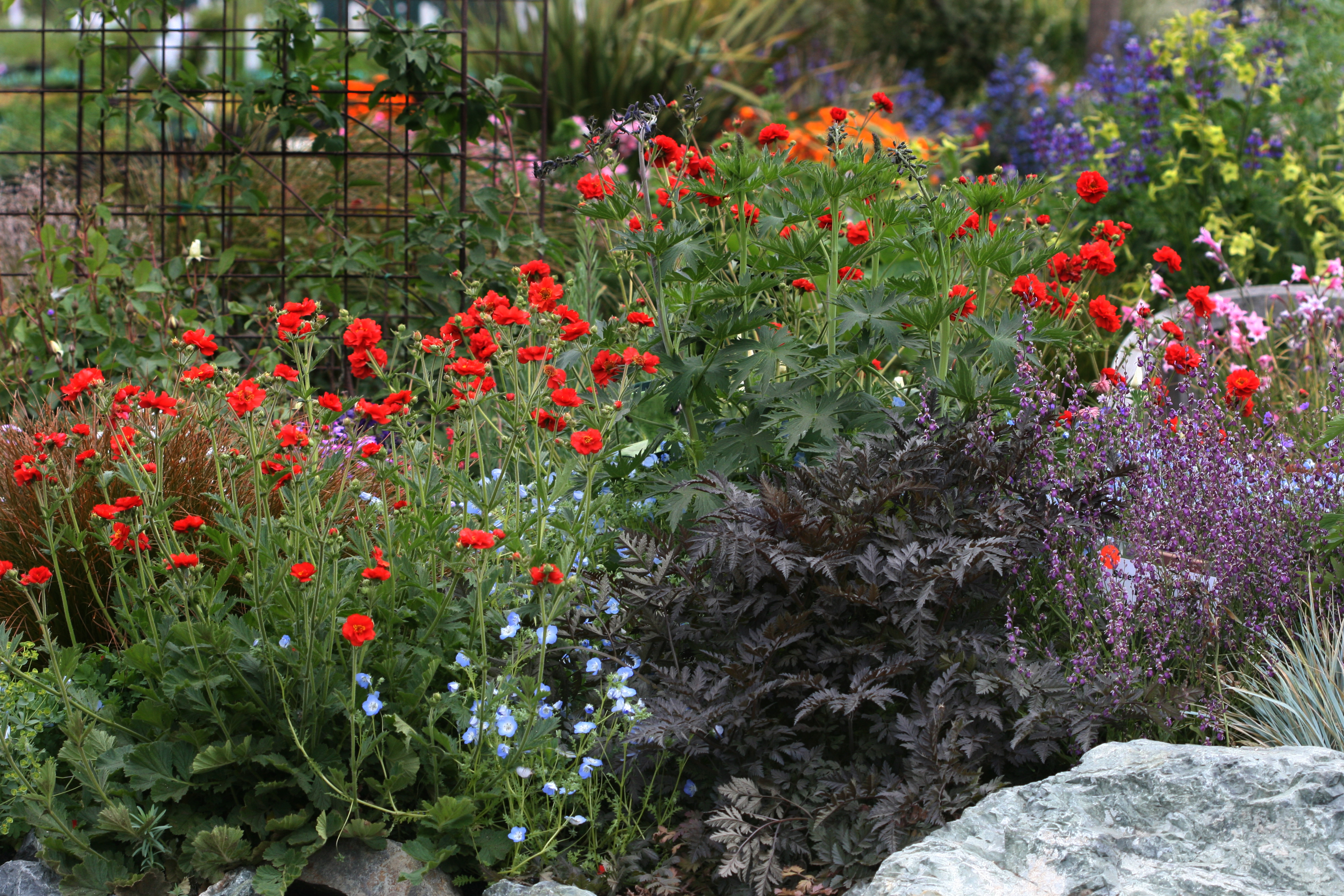By Sandra Nelson
I don’t know how you are handling stress these days, but I find myself drawn more and more to my yard. When I feel anxiety building, I stroll through the yard, stopping every few seconds to discover the changes from the day before and to soak in the calming power of nature. My yard has truly become my refuge.
Although today’s opening paragraph probably seems completely unconnected to the blog series we began last week — Designing Borders (and Beds) That Delight — bear with me for a moment and let me explain. A well designed garden bed is so much more than just an array of pretty flowers blooming in the summer; it can be a place of sanctuary in an increasingly threatening world or an expression of joy in a time of melancholy or even a slice of excitement when life is dull.
The mantra recently has been to plan and to plant a garden that makes you happy. And I do truly believe that — your garden should be an expression of who you are, not what the neighborhood expects. (My neighbor has a lush, green lawn that he constantly fertilizes, waters and de-bugs. We’re putting in a meadow…) But what some who staunchly declare plant what you love are neglecting to say is that within that plant for happiness there are also guidelines for what makes a beautiful garden bed.
While we tend to think of artwork as something painted on a canvas or sculpted from stone, a garden can also be considered a work of art. A garden, through its design, can communicate a range of human emotion. By judiciously choosing soft colors, flowing forms and gentle textures and then immersing them in a carefully crafted, symmetrical composition, a garden can project a soothing peacefulness. Conversely, with different choices, — bold colors, forms that communicate movement and a kaleidoscope of textures, for example — it can radiate a sense of dynamic energy.
For those of us who are lacking in design training, or who don’t seem to have the ability to discern what “works,” relying on tips from professional designers can help. This week, let’s walk through some of the steps involved in designing an informal, environmentally friendly garden. Many of the suggestions are adapted from the excellent book Planting in a Post-Wild World by Thomas Rainer and Claudia West. Others are once again from Dan Nelson, Embassy Landscape Group’s lead designer.
For a new bed, spending time choosing and analyzing a location is time well spent. Think about existing features that could impact the bed. (Is there a large tree or a wall nearby that will potentially shade a portion of the planting? Does the grade of the bed change from one end to the other?) Decide if the placement of the bed works in the overall landscape and if it is a spot that fits your goals for the garden. (Do I want a private escape or a community gathering place? Do I want to see it everyday from the kitchen window?) For an existing bed, decide what works well and what could be improved by making a few changes.
With a preliminary plan in mind, and of course an understanding of the environmental conditions of the site, it’s time to think about the plants that are known as your structure plants. These are the larger plants that give the garden strong form for the entire year. They are the framework of the garden. Structural plants tend to give weight to the design and can give the eye a focal point from which to begin exploring the bed, regardless of the viewing angle. Plants such as small trees, ornamental grasses, evergreens and viburnums are excellent examples of structure plants. Professionals suggest that about 10 to 15 percent of the bed should be devoted to structural plants.
The next layer that needs to be considered is the seasonal level. The plants in this category tend to be mid-sized and become visually predominant during varying times of the year. When not in bloom, they fill a supporting role by providing attractive foliage or interesting seed heads. Perennials such as rudbeckias, coneflowers and asters are just a few of the many beautiful options available. Choosing a variety of species with different bloom times will keep the garden lively all season long. Between 25 to 40 percent of the bed should consist of perennial seasonal plants.
To fill the gaps between the bursts of color from the perennial seasonal layer, add drifts of annuals, biennials and tender perennials. These plants tend to grow quickly, provide boundless color and are easily changed out at the end of a season. Balancing your structural plants, these fillers should account for about 10 to 15 percent of your bed,
The final level of the bed is the one that home gardeners often neglect — the ground level. Shorter, ground cover plants are essential not only as weed and erosion control, but also as a source of nectar for beneficial insects that visit the garden. The plants in this category need to be somewhat shade-loving since they compete with the structure and seasonal plants for sunlight. Many sedges work well as ground level plants, as do hardy geraniums and coral bells. Up to 50 percent of your bed could potentially be planted in ground covering plants.
With the framework of your garden set — in an artistic sense, its composition determined — then it is time to begin shaping the emotion of the garden with its color palette, its forms and textures, moving it from an array of pretty flowers to a living work of art.
Join us next week as we explore the use of these color, form and texture in the garden. See you then.











